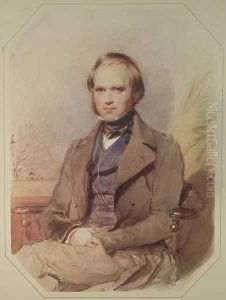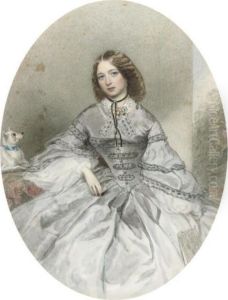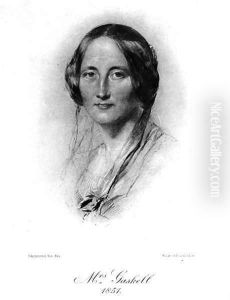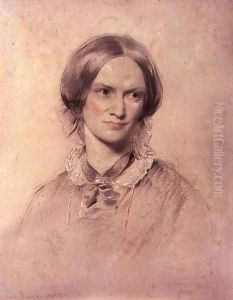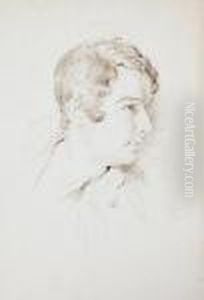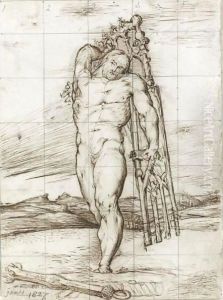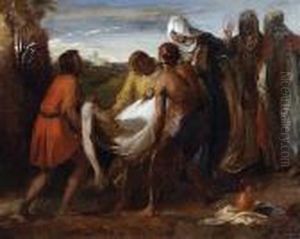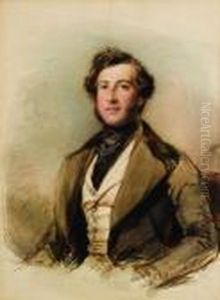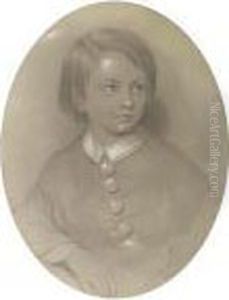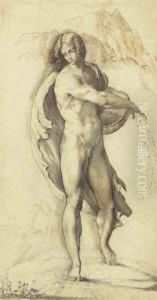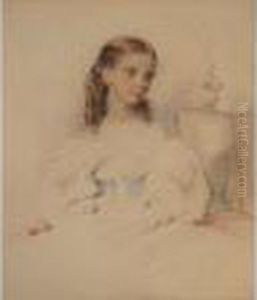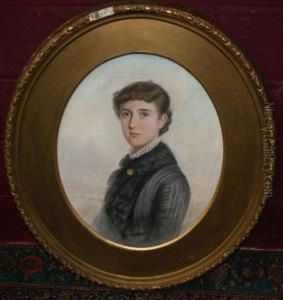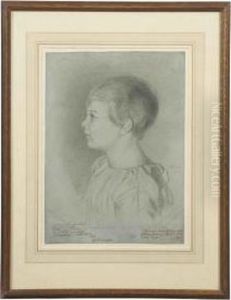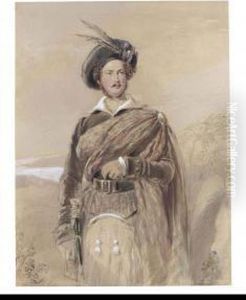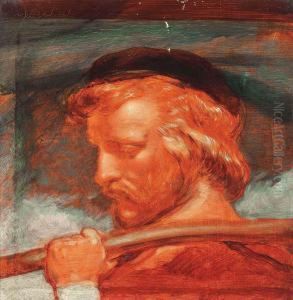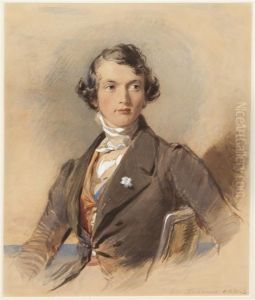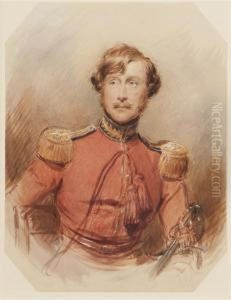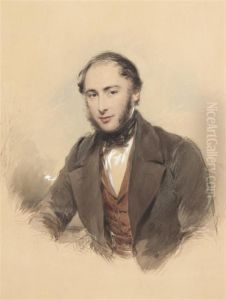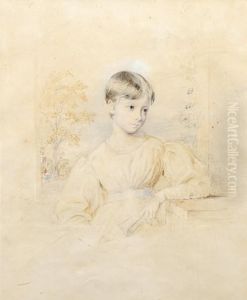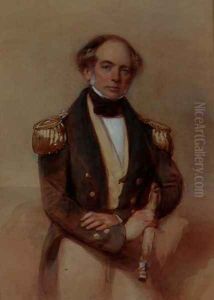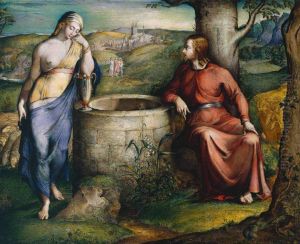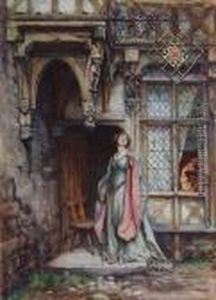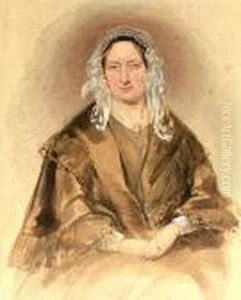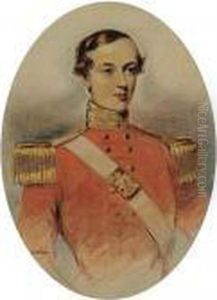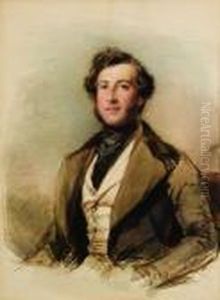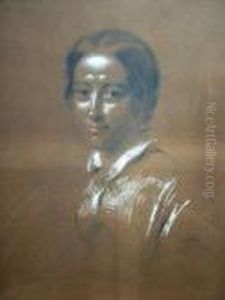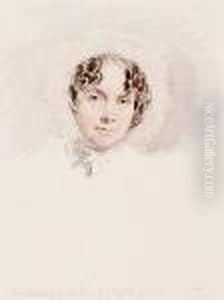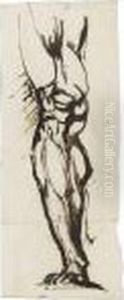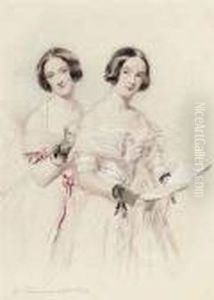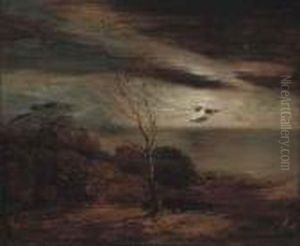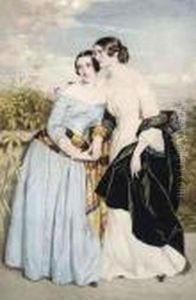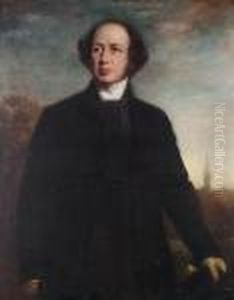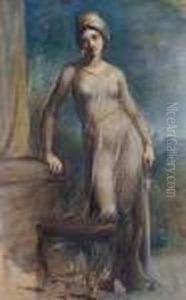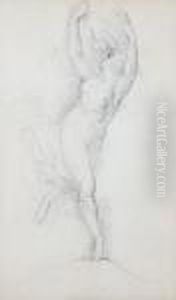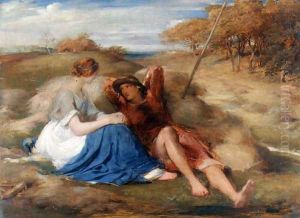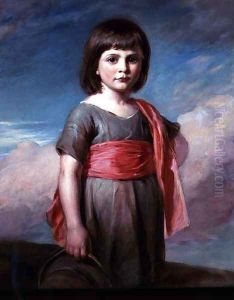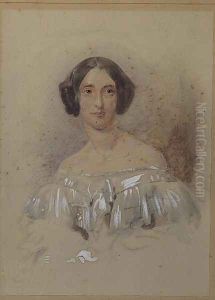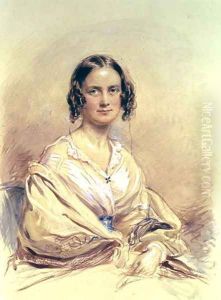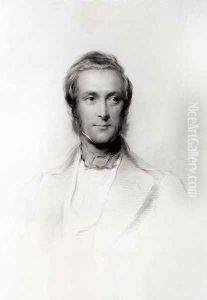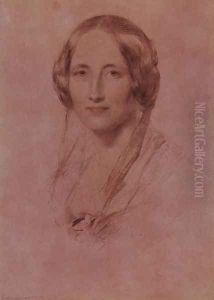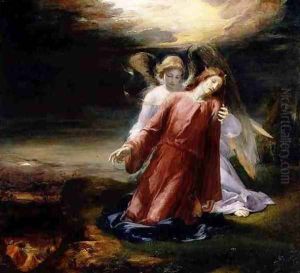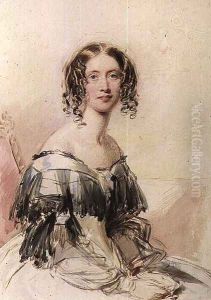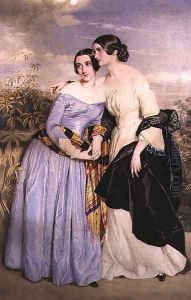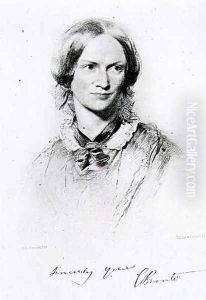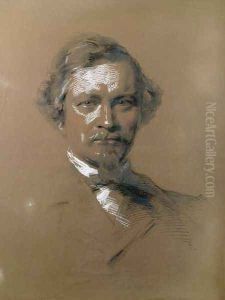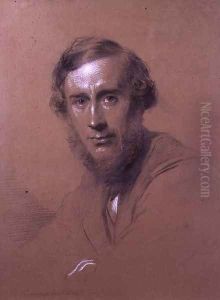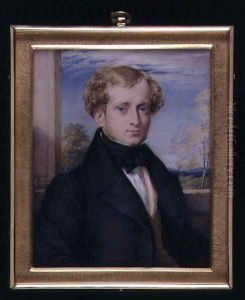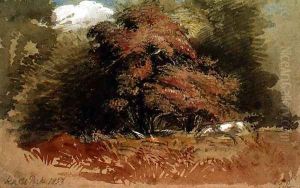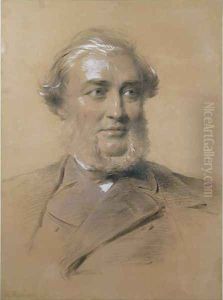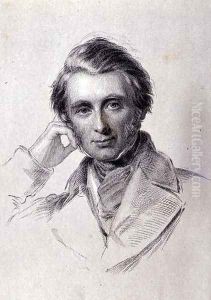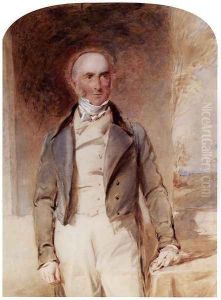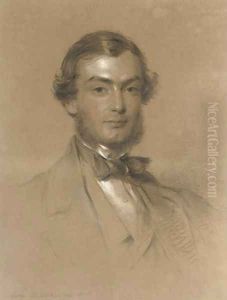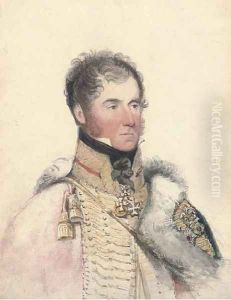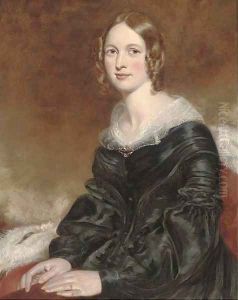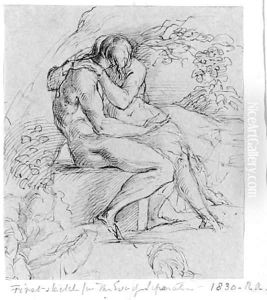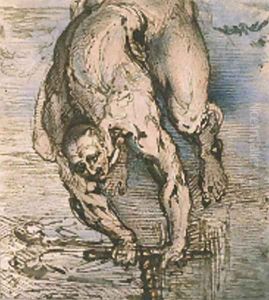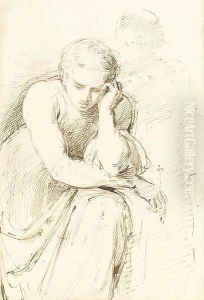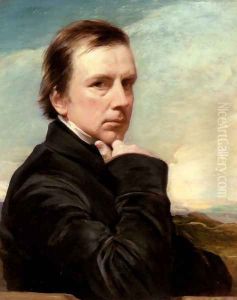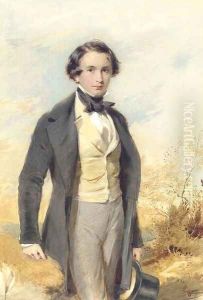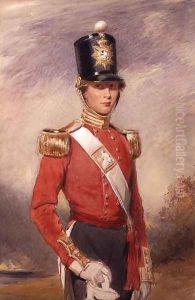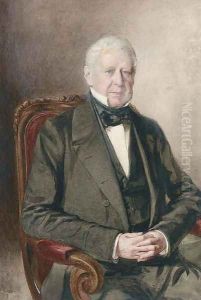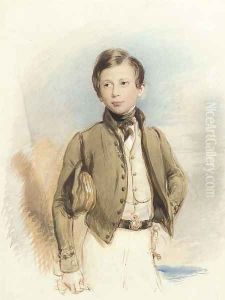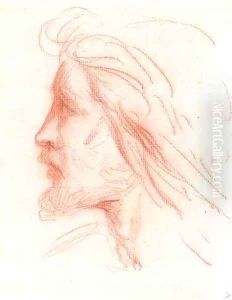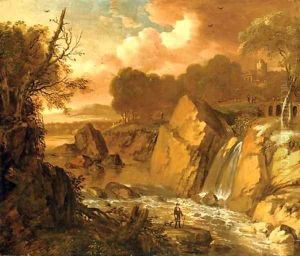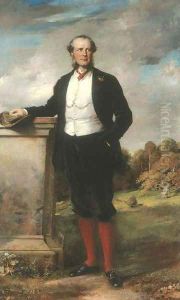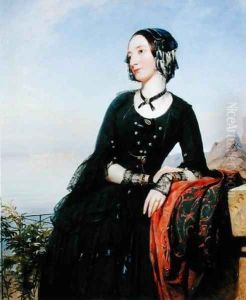George Richmond Paintings
George Richmond was a British painter and portraitist associated with the 'second generation' of Romantic painters in England. Born on March 28, 1809, in Brompton, near London, Richmond was the son of the miniaturist Thomas Richmond. He came under the influence of William Blake at a young age and was one of the founding members of the group of artists known as 'The Ancients.' This group was deeply inspired by Blake's spiritual and artistic vision and was committed to upholding his ideals in their work.
Richmond enrolled at the Royal Academy Schools in 1824, where he further developed his skills. Early in his career, he was part of a circle of artists that included Samuel Palmer and Edward Calvert, who shared a common interest in pastoral and visionary art. Richmond's early work consisted of landscapes that were imbued with a mystical quality and spiritual symbolism, much in line with Blake's own artistic philosophy.
As his career progressed, Richmond transitioned towards portrait painting, which would eventually become his primary focus. He gained significant recognition for his finely executed portrait work, which included many notable figures of his time. His portraits were known for their elegance and for capturing the character and essence of his subjects. Among his well-known works are portraits of William Wilberforce, a prominent anti-slavery campaigner, and Charlotte Brontë, the famous English novelist.
Richmond was also involved in the broader cultural life of Victorian England. He was a devout Christian and his faith played a significant role in his art and worldview. His work included religious subjects and he was active in various Christian philanthropic activities.
Despite the shift in his artistic output from the mystical landscapes of his youth to the refined portraits of his maturity, Richmond remained an important figure in British art throughout his life. He was elected as an associate of the Royal Academy in 1857 and became a full Royal Academy member in 1866. George Richmond continued to paint until his death on March 19, 1896, in London, leaving behind a legacy of work that is appreciated for its contribution to Romanticism as well as its insight into Victorian society.
